Grey Aluminium Sliding Doors: Light, Shade, and Style Guide
Table of Contents
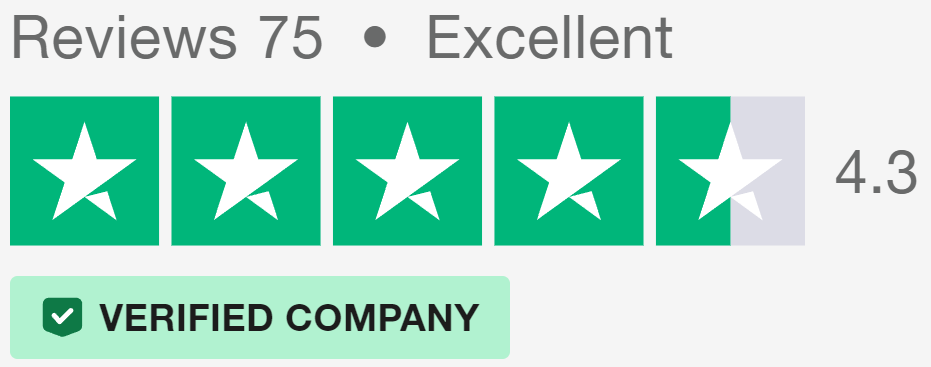
Choosing the Right Grey for Your Aluminium Sliding Doors
Grey aluminium sliding doors blend modern design with practical functionality, making them a popular choice for period properties and contemporary homes alike. Finding the perfect shade requires careful thought about your home’s architecture, surrounding materials, and the natural light in your space.
Warm vs Cool Grey Aluminium Sliding Doors
Subtle undertones in grey shades create distinctly different moods within a space. Warm greys contain hints of brown, beige, or red pigments, lending a softer, more inviting feel to grey aluminium sliding doors. Cool greys, which incorporate blue or green undertones, produce a crisp, modern appearance that works particularly well with chrome or stainless steel hardware.
Northern-facing rooms tend to emphasise cool undertones, while spaces with southern exposure bring out the warmth in grey tones. Testing samples of grey aluminium sliding patio doors at different times of day reveals how undertones can shift between morning and evening light.
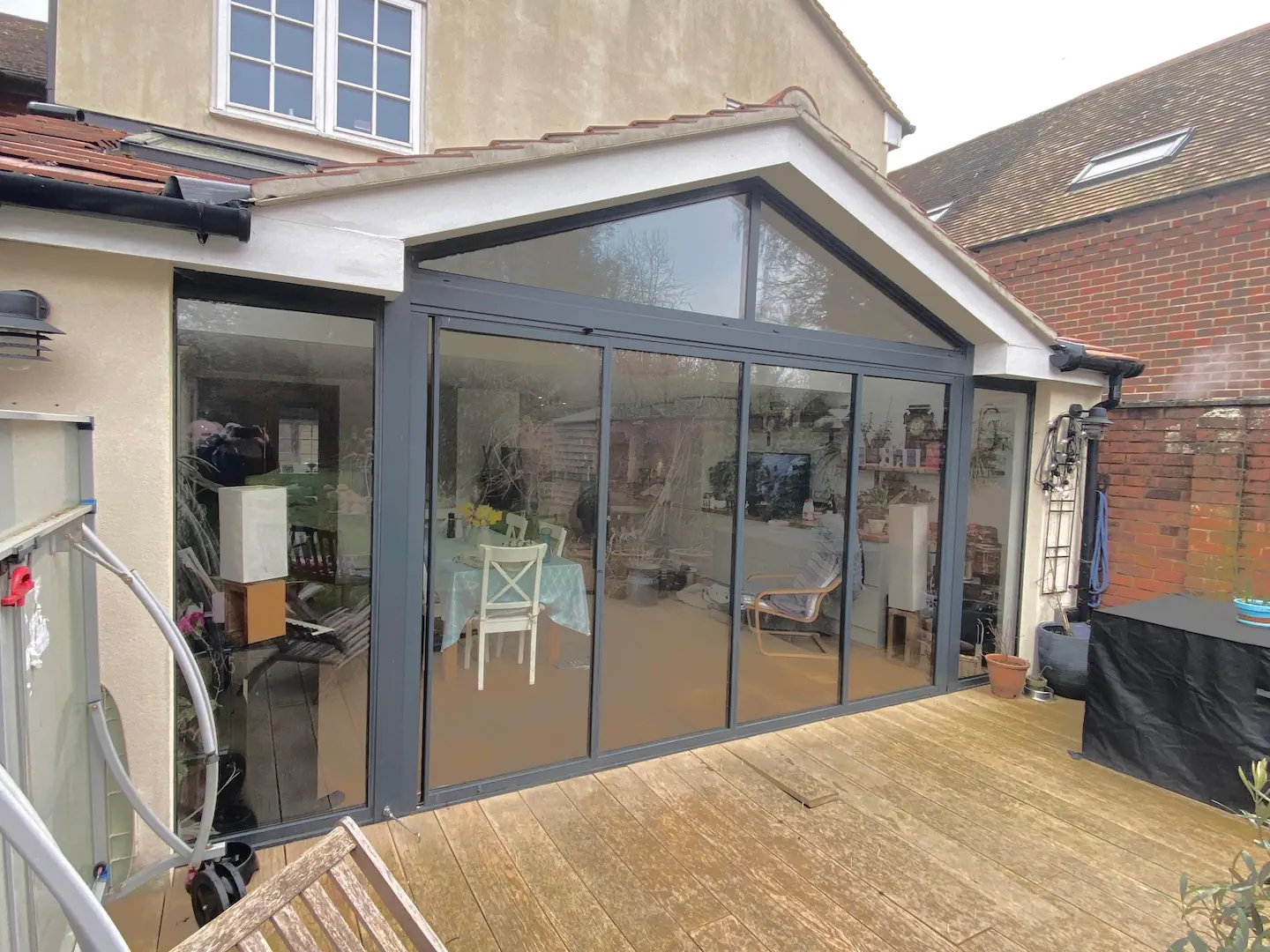
Popular RAL Grey Shades
Anthracite grey aluminium sliding doors (RAL 7016), remains the most specified option for UK homes. Mid-toned greys like RAL 7040 strike a balance between light reflection and visual weight, while darker RAL 7021 creates bold contrast against pale exterior walls.
Lighter RAL greys often appear whiter in bright sunlight, so choosing a slightly darker shade than initially planned can help maintain the desired depth of colour. Custom made sliding doors allow experimentation with non-standard RAL colours, opening up possibilities beyond traditional grey options.
Matt, Satin, or Gloss
Surface finish radically changes how grey aluminium sliding doors interact with light. Matt finishes absorb light, making the colour appear deeper and more consistent throughout the day. Gloss surfaces bounce light around the space, potentially creating unwanted reflections but helping to brighten darker areas. Satin strikes a middle ground, offering subtle light reflection while masking fingerprints more effectively than high-gloss alternatives.
Textural Variations
The microscopic texture of powder-coated surfaces adds another dimension to grey aluminium sliding doors. Fine textured finishes hide minor scratches better than smooth coatings, maintaining their appearance longer in high-traffic areas. Metallic additives in some grey powder coats create subtle shimmer effects that become more pronounced in direct sunlight.
Grey Aluminium Sliding Doors in Natural Light
Sunlight profoundly changes how grey aluminium sliding doors look throughout the day. Morning light tends to bring out warmer undertones, while afternoon sun might make the same doors appear cooler or more steely. Seasonal variations in daylight intensity require careful shade selection – a grey that works perfectly in summer might look flat or dull during darker winter months.
Seasonal Light Changes
UK weather patterns create unique challenges when selecting grey shades. Winter’s low-angle sunlight can make darker greys appear almost black, especially in north-facing installations. South-facing grey aluminium sliding doors receive intense direct light, which might wash out lighter greys or create unwanted glare. Spring and autumn light often provides the truest representation of your chosen grey shade.
The surrounding landscape alters light quality too. Trees casting dappled shade across grey aluminium sliding patio doors change their appearance hour by hour. Gardens with light-coloured paving reflect additional light upward, while dark patios absorb light and reduce reflection. Nearby buildings might block direct sun during certain hours, creating patches of shade that change the doors’ appearance.
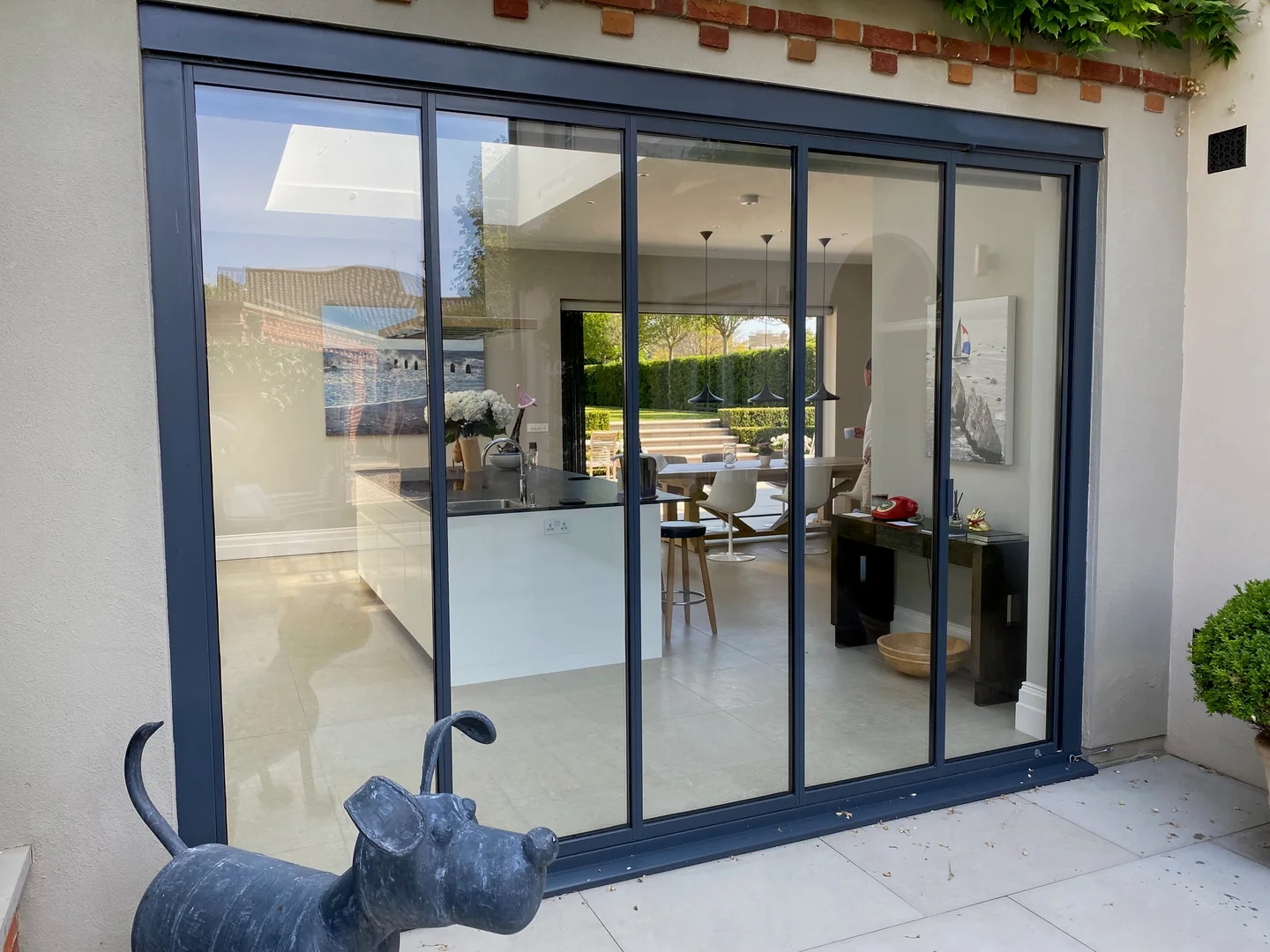
Managing Reflections
Minimal sightlines in modern door designs mean less frame and more glass, changing how light bounces around your space. South-facing grey aluminium sliding doors often benefit from anti-glare glass options, helping control strong reflections while maintaining the clarity of your view. Eastern exposures face intense morning sun, making light grey finishes particularly susceptible to glare.
Minimal frame sliding doors often require extra attention to reflection management. Their slim profiles can create sharp contrast between frame and glass, especially in bright conditions. Powder coat finish choice becomes particularly important – matt finishes reduce unwanted reflections but might show fingerprints more readily than satin alternatives.
Light Impact on Door Sizes
Panel size influences how light interacts with grey aluminium sliding doors. Larger panels create broader surfaces for light play, while multiple smaller panels break up reflection patterns. Wide doors spanning several metres might display subtle variations in how their grey finish appears across their length, particularly in raking light.
Glass Specifications
Triple glazing adds depth to the overall door profile, creating more pronounced shadows around each panel. These shadows can make the grey frames appear darker than they actually are, especially when viewed at an angle. Low-iron glass improves clarity and reduces the green tinge common in standard glass, letting the true grey of your frames shine through.
Sun tracking across larger installations reveals different characteristics of grey finishes throughout the day. Early morning light striking the doors at a shallow angle highlights surface texture, while overhead sun at midday flattens the appearance of even heavily textured finishes. West-facing grey aluminium sliding doors catch warm evening light, often appearing softer and more muted than during harsh midday sun.
Taller door heights present unique lighting challenges. Upper sections might catch different light than lower panels, creating apparent colour variations in the grey finish. This effect becomes more noticeable with darker greys or in installations spanning multiple stories. Light reflections from upper floors can bounce onto ground floor grey aluminium sliding doors, adding another layer of complexity to shade selection.
Position relative to roof overhangs or exterior shading devices changes the light falling on door surfaces. Deep overhangs shield doors from direct sun but might create dark shadows that make grey finishes appear inconsistent. Careful planning of exterior shading helps manage light levels while maintaining the desired appearance of your chosen grey shade.
Matching Grey Aluminium Sliding Doors with Your Home
Grey aluminium sliding doors must work in harmony with existing materials and architectural features. Different brick types create varying colour interactions – London Yellow Stock bricks pull out warmer undertones in grey finishes, while red brick can make cool greys appear slightly bluish. Natural stone presents similar complexities, as its varied tones and textures interact differently with each grey shade.
Pairing with Brick and Stone
Rendered walls offer a neutral backdrop for grey aluminium sliding patio doors, though texture differences between smooth and roughcast finishes alter how light plays across the frames. White render intensifies the contrast with darker greys, making them appear almost black in certain lights. Cream or off-white renders soften this contrast while still maintaining visual interest.
Space saving sliding doors may need careful colour coordination with surrounding materials. Lighter greys often work better in smaller spaces where darker shades might feel oppressive against nearby walls or columns. The relationship between frame colour and wall finish becomes particularly important in compact areas where the doors form a major visual element.
Traditional vs Modern Homes
Period properties require thoughtful integration of grey aluminium sliding doors. Victorian and Edwardian homes traditionally featured darker external woodwork, making deeper greys a natural choice that respects original architectural intent. Georgian properties, with their classical proportions, often suit mid-tone greys that echo traditional painted timber without trying to mimic it.
Modern architectural styles provide more flexibility in grey selection. Clean lines and minimal detailing of contemporary buildings pair naturally with crisp, cool greys. Industrial-inspired designs might call for darker, more technical-looking finishes that complement exposed materials like concrete or steel.
Coordinating with Windows
Aluminium doors should match or deliberately contrast with existing window frames. Mixing different greys across various aluminium elements creates a disjointed appearance, while matching frames produces a more refined look. When replacing doors but keeping existing windows, choosing a complementary grey tone helps tie old and new elements together.
The width and style of window frames influence grey selection for sliding doors. Chunky window frames paired with slim-framed grey aluminium sliding doors can look unbalanced unless the colour choice helps unify their different proportions.
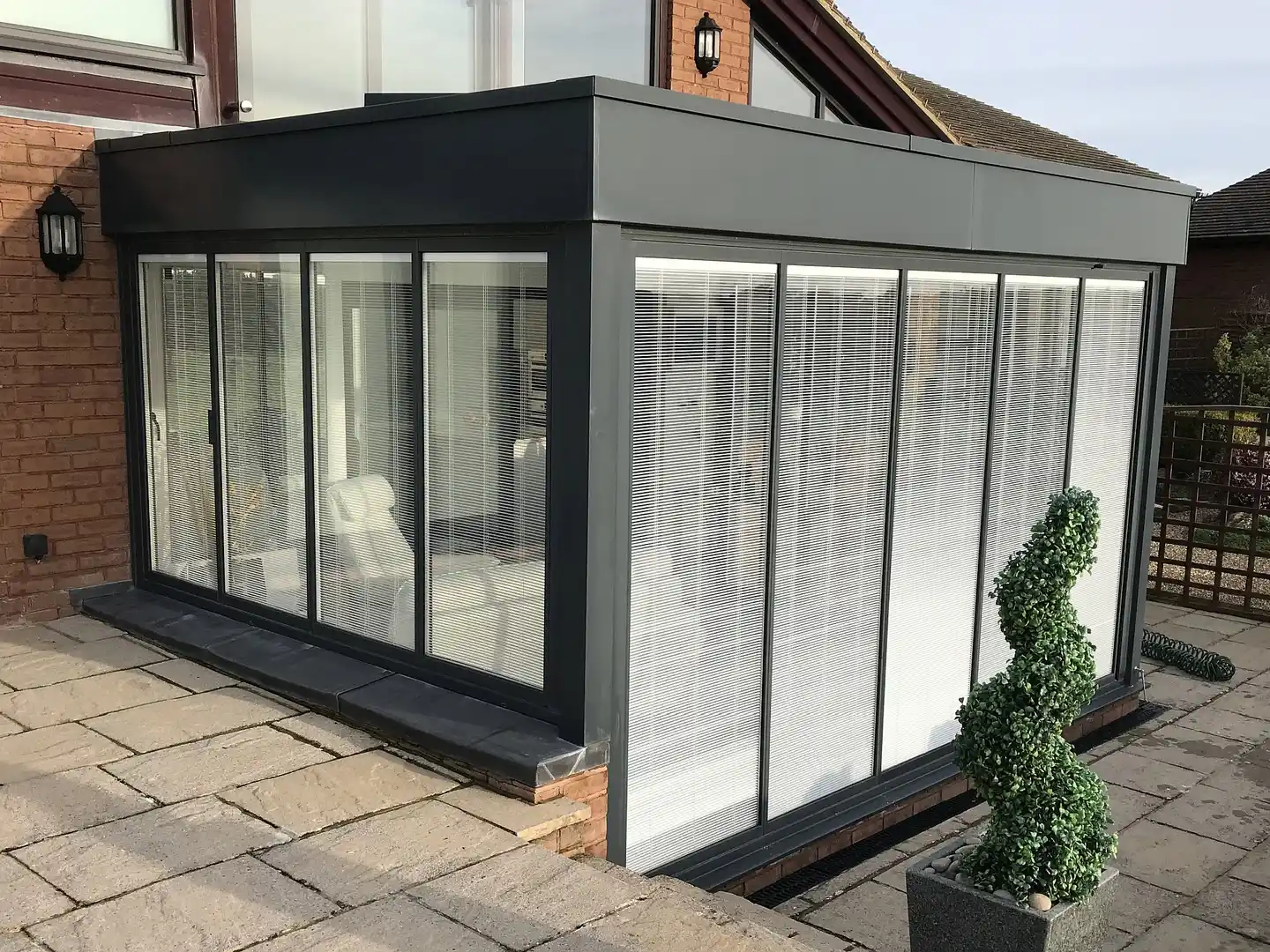
Architectural Details
Grey aluminium sliding doors interact with other architectural elements like fascias, guttering, and external pipes. These details, though often overlooked, can clash with poorly chosen grey shades. Darker greys typically hide rainwater goods more effectively than lighter options, while mid-tones offer good compromise between practicality and style.
Exterior metalwork such as railings, gates, or security grilles should coordinate with your chosen door colour. The finish of these elements – whether powder-coated, galvanized, or painted – influences how well they work with different grey aluminium sliding doors. Warm greys often pair better with brass or bronze hardware, while cool greys complement chrome or stainless steel.
Technical Aspects of Grey Aluminium Sliding Doors
Material quality fundamentally shapes how sliding doors perform and look over time. Premium-grade aluminium offers superior strength at reduced frame widths, allowing slim frame patio doors to support larger glass panels while maintaining structural integrity. Thicker aluminium profiles might be needed for oversized installations, though modern manufacturing techniques help maintain elegant proportions.
Powder Coating vs Anodising
Powder coating creates a hard-wearing surface available in virtually any RAL shade of grey. The coating process involves electrostatically applying dry powder to the aluminium, then curing it at high temperatures to form a tough skin. Different powder types produce varying textures – from ultra-smooth to subtly rippled finishes that disguise minor scratches.
Anodised finishes penetrate the aluminium surface rather than coating it, resulting in a metallic appearance that ages gracefully. While colour options are more limited than powder coating, anodised grey aluminium patio doors maintain their appearance exceptionally well in coastal areas where salt air might degrade other finishes. The anodising process also highlights the metal’s natural grain, adding subtle texture to the surface.
Glass Options and Grey Doors
Glass specification changes the overall appearance of glass patio doors substantially. Double glazing creates a shallower profile than triple glazing, though the extra pane in triple glazing can improve thermal performance in exposed locations. Low-iron glass reduces the greenish tint found in standard glazing, showing the true colour of grey frames more accurately.
Glazing gaps between panes require careful planning to prevent condensation. Warm-edge spacer bars in colours matching the frame reduce visual disruption while improving thermal properties. Some manufacturers offer grey spacer bars specifically designed to complement popular aluminium frame colours.
Solar control glass helps manage internal temperatures without compromising views. Different coatings alter the glass’s appearance – some add subtle colour tints that work particularly well with certain grey shades, while others maintain perfect clarity. Reflective coatings might create interesting mirror effects but need careful integration with the chosen frame colour.
Hardware and Handles
Inline handles sit flush with the frame, maintaining clean lines and smooth operation. Exterior handle colours should match or purposefully contrast with the frame – brushed stainless steel hardware often works well with cooler greys, while darker finishes complement warmer grey tones.
Lock mechanisms hidden within the frame preserve minimal sight lines while providing robust security. Multi-point locking systems require slightly wider frame sections at locking points. The interaction between hardware and frame becomes particularly important in doors with integral blinds, where additional space is needed within the glazing cavity.
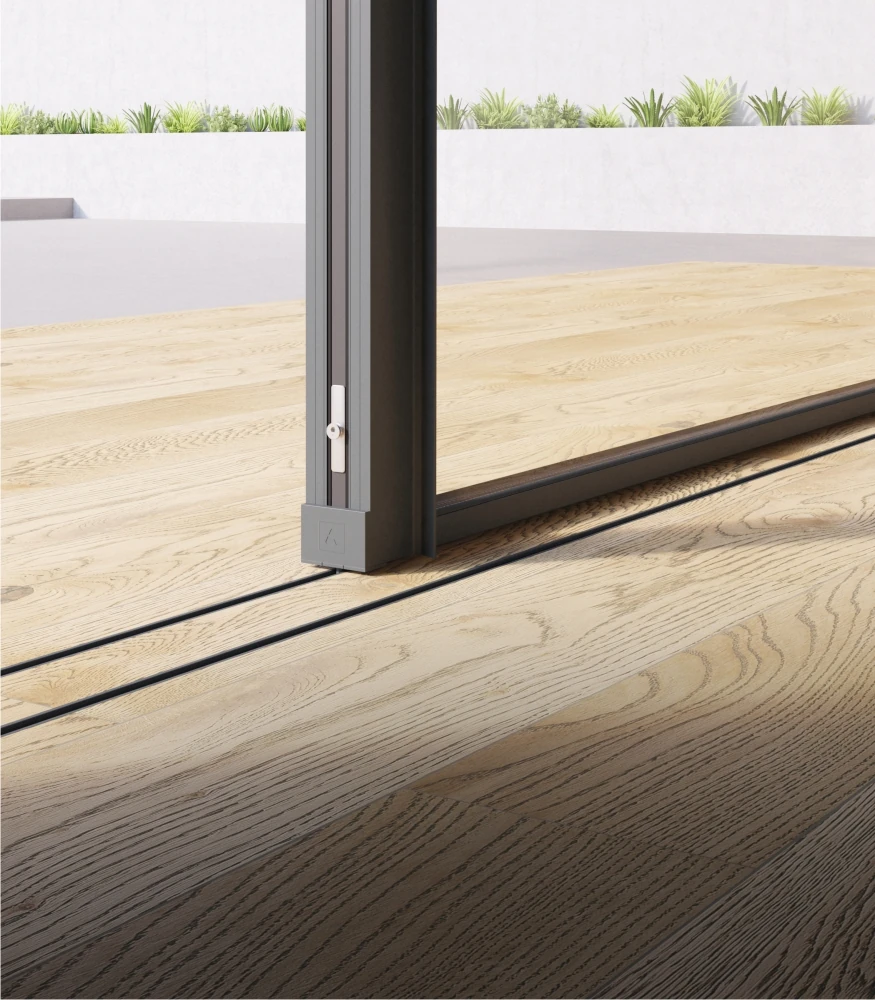
Running Gear
Superior quality rollers ensure smooth operation regardless of panel weight. Stainless steel tracks resist corrosion better than aluminium alternatives, though they might require different frame designs to accommodate their increased strength. Running gear specification becomes especially important in wider installations where individual panels carry more glass weight.
Threshold options vary from completely flush to slightly raised designs. Weather rating requirements often dictate threshold height, with more exposed locations needing higher upstands to prevent water ingress. Some systems offer adjustable threshold heights, allowing installation to suit specific site conditions while maintaining weather protection.
Grey Sliding Doors and Interior Design
Paint colours, furniture choices, and lighting schemes all contribute to how grey aluminium sliding doors appear from inside your home. Each shade of grey creates different moods – darker tones add sophistication and drama, while lighter greys introduce subtle contrast without dominating the space.
Creating Depth with Dark Greys
Deep charcoal frames draw attention to views beyond the glass, acting like picture frames for your garden landscape. Strong grey tones work particularly well in rooms with abundant natural light, where they provide striking contrast against pale walls or flooring.
Layering different materials near dark grey frames adds richness to interior schemes. Natural wood flooring or furniture introduces warmth that balances cooler grey tones. Stone or concrete elements near the doors echo their industrial qualities while adding textural interest. Wall finishes like polished plaster take on different characteristics when placed next to dark grey aluminium, sometimes appearing to shift colour as light conditions change.
Light Grey and Space
Paler grey frames create subtle boundaries between interior and exterior views. These lighter tones suit rooms where you want to maintain brightness while adding architectural interest. The gentle contrast helps maintain a sense of spaciousness, especially in smaller rooms or areas with limited natural light.
Grey aluminium sliding patio doors in lighter shades work exceptionally well with white or off-white walls, creating a refined gradient of neutral tones. These combinations allow other design elements to take centre stage – artwork, statement furniture, or bold fabric choices become more prominent against a quieter backdrop.
Scandinavian Style Integration
Nordic design principles emphasise light, natural materials, and understated elegance. Mid-tone greys complement this aesthetic perfectly, providing definition without heaviness. Simple furniture shapes and minimal patterns often characterise spaces where grey aluminium sliding doors feature prominently.
Raw materials like exposed brick or concrete gain extra depth when paired with grey frames. These industrial elements, common in Scandinavian interiors, create a sophisticated dialogue between different textures and finishes. Wooden elements, particularly pale oak or ash, introduce organic warmth that prevents grey-heavy schemes from feeling too clinical.
Colour Schemes
Certain colours gain intensity when placed near grey frames. Deep blues and greens appear richer, while earthy terracottas and ochres feel warmer and more inviting. The key lies in choosing complementary shades that either contrast with or echo the undertones in your chosen grey.
Pattern and Texture
Textiles play a vital part in successful grey-based schemes. Natural linens and wools in neutral shades add subtle texture without competing with the doors’ clean lines. Patterns work best when they incorporate similar grey tones – geometric designs or abstract prints can help tie together different elements within the space.
Wall coverings near grey frames need careful selection. Heavily patterned wallpapers might fight for attention with stronger greys, while textured options like grasscloth provide interest without overwhelming. The interaction between different surfaces becomes particularly important in rooms where sliding doors form a major architectural feature.
Window treatments require extra thought when designed around sliding doors. Sheer fabrics filter light while maintaining the doors’ clean aesthetic, and metallised finishes can echo the aluminium frames. Heavier curtains in complementary greys create cohesion, though they should be carefully planned to avoid blocking the doors’ operation.
Lighting design changes how grey tones read at different times. Directional spotlights might create unwanted reflections on glass panels, while softer, diffused lighting helps maintain consistent colour appearance throughout the evening. The placement of light sources near grey frames can emphasise their architectural quality or help them recede into the background, depending on your design goals.
We’d Love to Help You
Vision Glass Doors is a designer, manufacturer, and installer of premium door systems. We are a family run business with over 20 years’ experience and 5,000 installations across the UK.
Our leading range of door systems include Ultra Slim – Slide and Turn Doors, Slimline Sliding Patio Doors and Frameless Glass Doors. Suitable for various internal and external applications, they are applicable to residential and commercial projects.
Click Quick Quote Online for a free quotation within 24 hours. Alternatively, call or email us on 01582 492730 or at info@visionglassdoors.co.uk.

